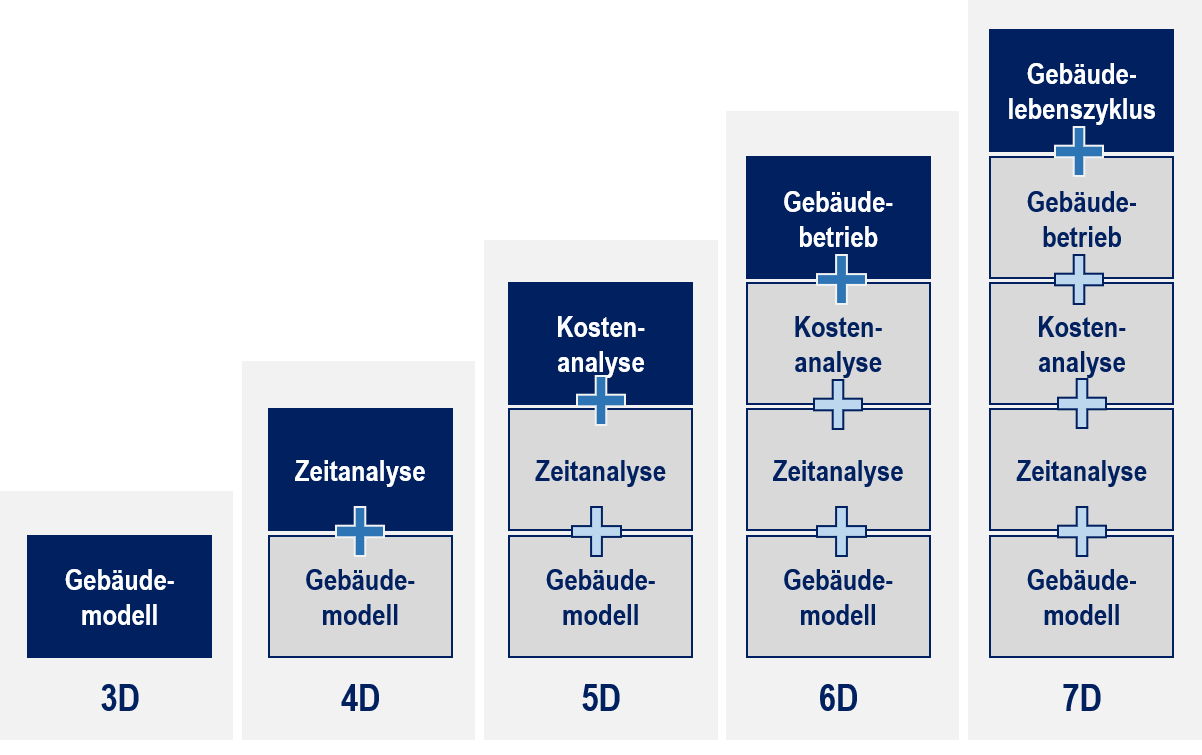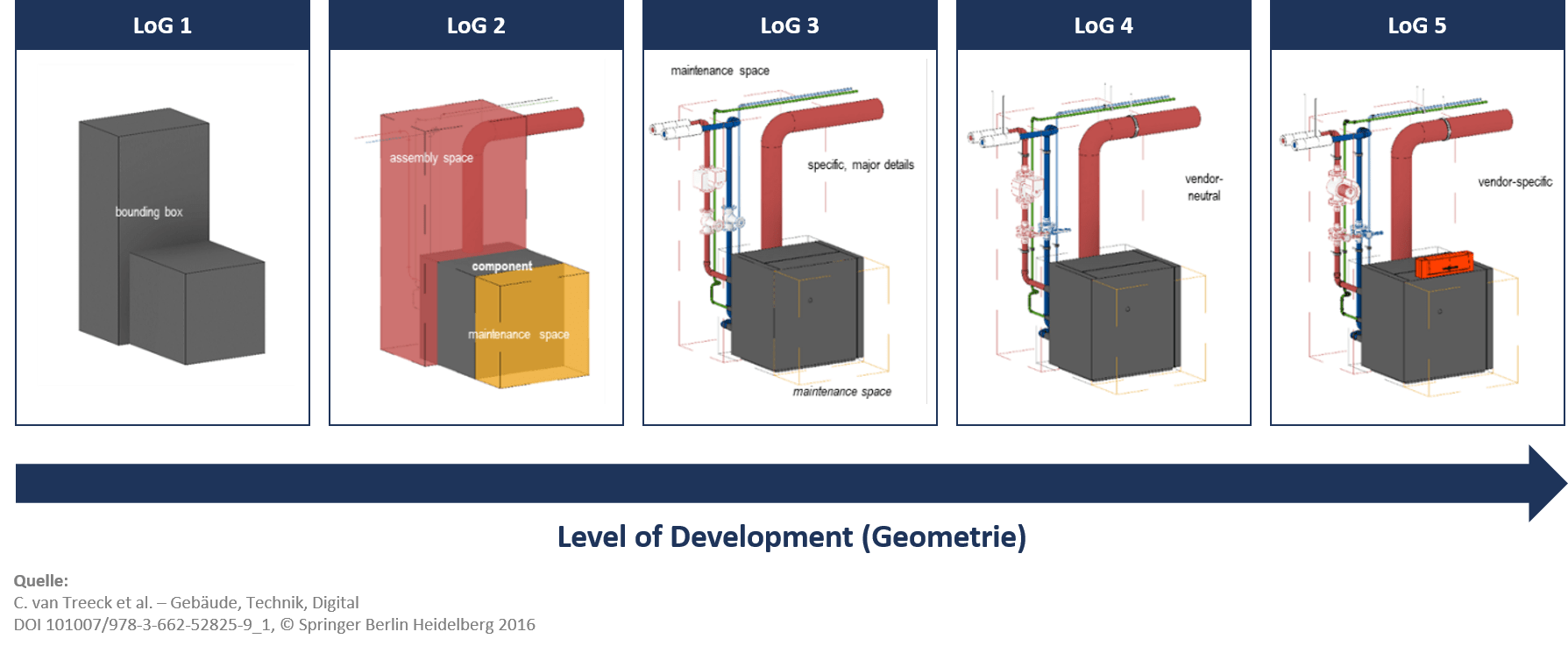How much BIM do you really need?
BIM (Building Information Modelling) refers to a method for continuous planning, execution and management over the entire life cycle of a building. From a technical point of view, the focus is on a virtual building model (“digital twin”) that is shared between the project participants. The entire planning and construction documentation is centralized in the model. The model can then be used, among other things, to examine the energy performance, determine quantities and costs and simulate the construction process.
BIM is more than just 3D
Even if nowadays planning is still done in 2D from time to time, 3D planning has now largely gained a foothold. But 3D is not BIM. The BIM methodology requires that not only a visual representation of the building model is available within the 3D model, but also that all relevant data and information are available, including the technical and functional properties of the model.
Classification systems are often used to have an overview, for example by simply updating the dimensions. The fourth dimension (4D) stands for the component in terms of time. It is not only about dates, but also about states (planned, accepted, etc.). It is mainly used during the construction phase or during preparation. Thereby, it visualizes the construction processes on the one hand and documents the construction progress on the other. The fifth dimension focuses on quantities and costs. On the one hand, this is important in the early phase in order to provide the client with cost certainty and enable decisions to be made. On the other hand, it is also important for the construction phase in order to provide an exact determination of the products used. The dimensions can be continued indefinitely.

In addition to the distinction between geometry and information, other classification systems also focus on coordination. This serves as a meta-information to tell if the model is collision-free. Coordination could be both geometry and information. In addition to this distinction between information and geometry, there is also the perspective of maturity, the level of development.

This describes for each content dimension the time-related degree of maturity and thus the possibility of interpreting the data and information. A low level of maturity stands, for example, for a low level of geometry or for reduced, manufacturer-neutral attributes of objects or components. At maximum maturity, the objects or components are fully detailed geometrically for the respective purpose and provide all relevant, manufacturer-specific attributes.
Tips from the BIM experts at OpenProject:
- Keep the maturity level only as high as necessary, but as low as possible. Become aware of what you really need. And above all, by when you need it and to what level of detail. This applies especially to geometry. Geometrically very detailed objects can slow down BIM applications to the point of unusability, for example.
- Differentiate the maturity levels by dimension. Sometimes it is better in a project to increase the maturity level of information faster than that of geometry.
- There are different approaches, but so far no uniform standard has been established for either the dimensions or the maturity level. You should therefore ensure that a common definition exists within your project across all internal and external project participants.
- If this is not possible, communicate clearly how you deal with the dimensions and maturity levels in the project (internally, e.g. employees, and externally, e.g. external trades or client).



